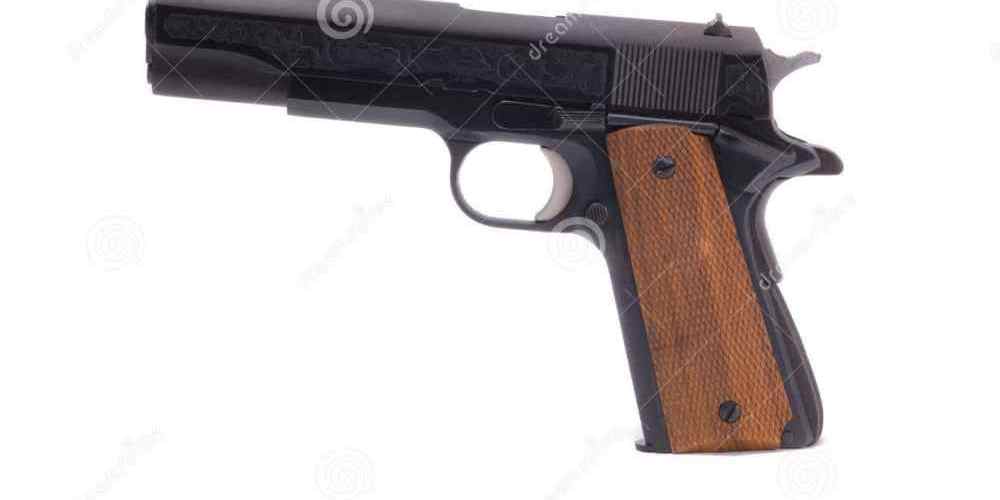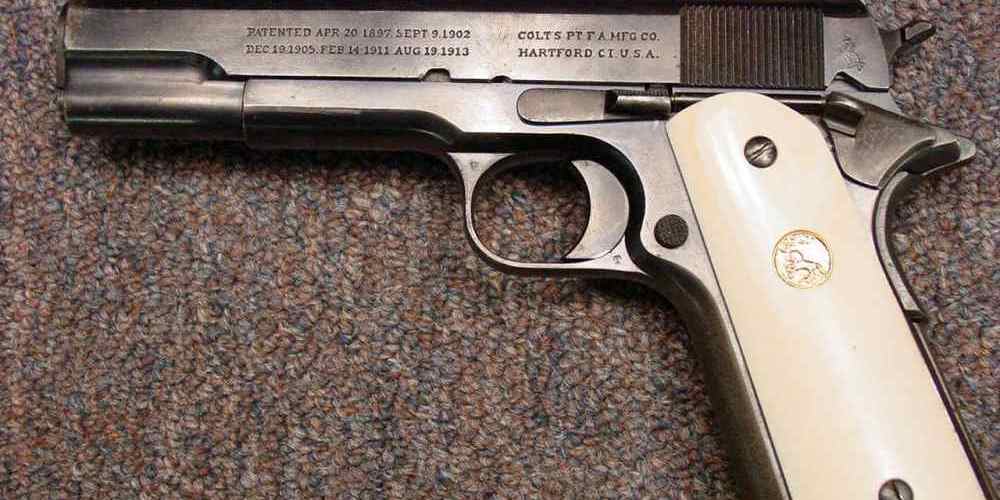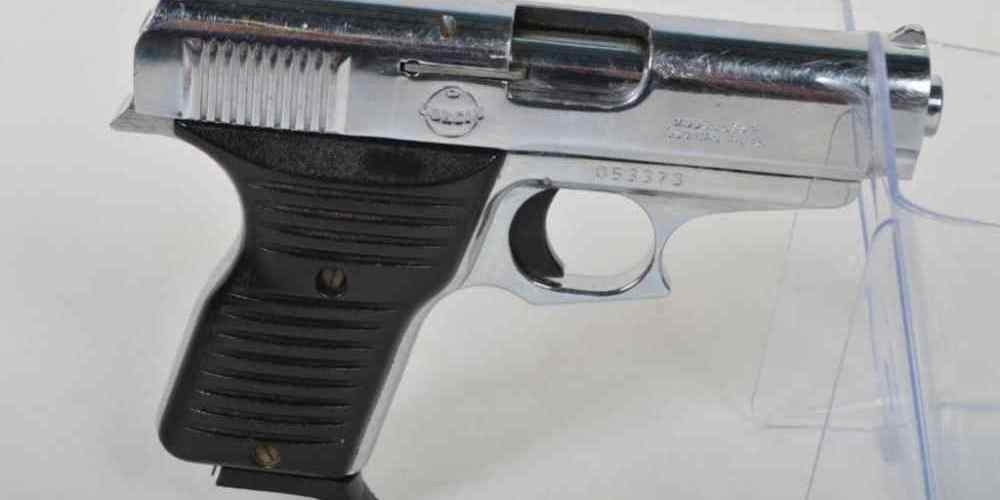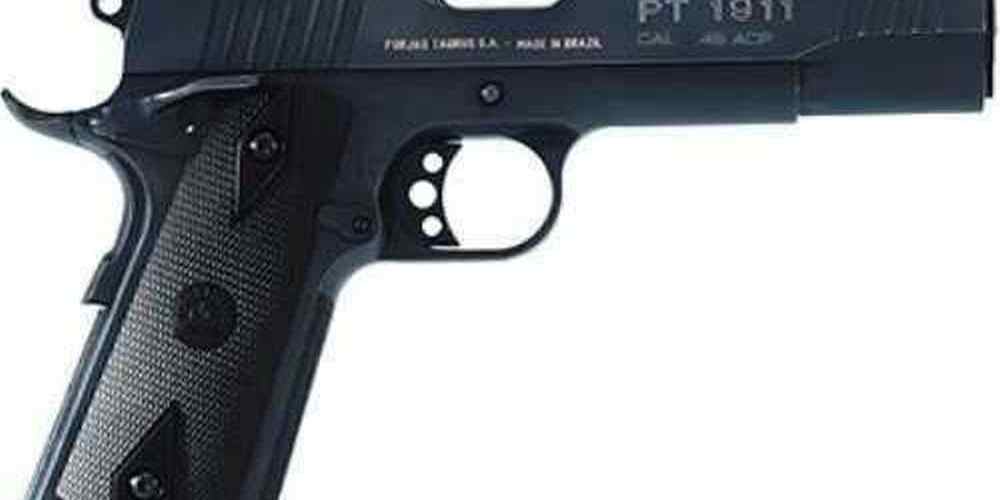“From manual to passive, safety evolves with every shot.”
Manual Safety Mechanisms in Early Semi-Auto Pistols
Semi-automatic pistols have come a long way since their inception in the late 19th century. One of the key features that has evolved over time is the safety mechanism. In the early days of semi-auto pistols, manual safety mechanisms were the norm. These manual safeties required the shooter to physically engage or disengage the safety lever in order to fire the weapon. While effective in preventing accidental discharges, manual safeties could be cumbersome and slow to operate in high-stress situations.
Manual safety mechanisms in early semi-auto pistols typically consisted of a lever or button located on the frame of the gun. When engaged, the safety would prevent the trigger from being pulled, effectively rendering the gun inoperable. To fire the weapon, the shooter would need to disengage the safety by flipping the lever or pressing the button before pulling the trigger. While this system was effective in preventing accidental discharges, it required an extra step that could slow down the shooter in a self-defense situation.
As semi-auto pistols became more popular for self-defense and law enforcement use, manufacturers began to explore alternative safety mechanisms that would be faster and more intuitive to use. One of the first innovations in this area was the passive safety mechanism. Passive safeties are designed to automatically engage or disengage when the gun is fired, eliminating the need for the shooter to manually operate a safety lever or button.
One common type of passive safety mechanism is the trigger safety. Trigger safeties are designed to prevent the trigger from being pulled unless the shooter applies pressure to a specific part of the trigger. This added layer of safety helps prevent accidental discharges if the gun is dropped or mishandled. Another type of passive safety is the firing pin block, which prevents the firing pin from striking the primer of the cartridge unless the trigger is pulled. This helps prevent the gun from firing if it is dropped or bumped.
The evolution of semi-auto pistol safeties from manual to passive mechanisms has made these firearms safer and easier to use for shooters of all skill levels. Passive safeties are designed to be intuitive and require minimal training to operate effectively. This is especially important for self-defense situations, where every second counts.
In conclusion, the evolution of semi-auto pistol safeties from manual to passive mechanisms has been a significant advancement in firearm technology. These passive safeties are designed to be faster, more intuitive, and easier to use than their manual counterparts. As semi-auto pistols continue to evolve, we can expect to see even more innovations in safety technology that will make these firearms even safer and more reliable for shooters.
Transition to Passive Safeties in Modern Semi-Auto Pistols
Semi-automatic pistols have come a long way since their inception, with advancements in technology and design continually improving their safety features. One significant evolution in semi-auto pistol safeties is the transition from manual safeties to passive safeties in modern firearms.
Manual safeties have been a standard feature on pistols for many years, requiring the shooter to physically engage or disengage the safety mechanism before firing the weapon. While manual safeties are effective in preventing accidental discharges, they can also be cumbersome and slow down the shooter in high-stress situations.

As technology has advanced, manufacturers have developed passive safeties that automatically engage or disengage without any action required from the shooter. These passive safeties are designed to prevent accidental discharges while allowing for faster and more intuitive operation of the firearm.
One common type of passive safety found in modern semi-auto pistols is the trigger safety. This safety mechanism is integrated into the trigger itself, requiring the shooter to apply pressure to the trigger in a specific way to disengage the safety and fire the weapon. Trigger safeties are popular among shooters for their simplicity and ease of use.
Another type of passive safety that has gained popularity in recent years is the grip safety. This safety mechanism is located on the grip of the pistol and requires the shooter to have a firm grip on the firearm in order to disengage the safety and fire the weapon. Grip safeties are effective in preventing accidental discharges if the shooter loses control of the firearm.
In addition to trigger and grip safeties, some modern semi-auto pistols also feature passive safeties such as firing pin safeties and drop safeties. Firing pin safeties prevent the firing pin from striking the primer of a cartridge unless the trigger is pulled, while drop safeties prevent the firearm from discharging if it is dropped or mishandled.
The transition to passive safeties in modern semi-auto pistols has been driven by a desire for increased safety and ease of use for shooters. These passive safety mechanisms provide an added layer of protection against accidental discharges while allowing for faster and more intuitive operation of the firearm.
While manual safeties still have their place in certain firearms, the trend towards passive safeties in modern semi-auto pistols is likely to continue as technology continues to advance. Shooters can expect to see more innovative safety features incorporated into new firearms, making them safer and more user-friendly than ever before.
In conclusion, the evolution of semi-auto pistol safeties from manual to passive has been a significant development in the firearms industry. These passive safety mechanisms provide shooters with increased safety and ease of use, allowing for faster and more intuitive operation of the firearm. As technology continues to advance, shooters can expect to see even more innovative safety features incorporated into modern semi-auto pistols, making them safer and more reliable than ever before.
Impact of Passive Safeties on Pistol Design and Function
When it comes to firearms, safety is paramount. Over the years, semi-automatic pistols have evolved to include various safety features to prevent accidental discharges and ensure the user’s safety. One significant development in pistol safety is the transition from manual safeties to passive safeties.
Manual safeties, also known as thumb safeties, require the user to physically engage or disengage the safety mechanism before firing the pistol. While manual safeties have been a standard feature on many pistols for decades, they can be cumbersome to operate in high-stress situations. Additionally, there is always the risk of forgetting to engage the safety, which could have disastrous consequences.
In response to these limitations, firearm manufacturers began incorporating passive safeties into their pistol designs. Passive safeties are internal mechanisms that automatically engage or disengage when the pistol is in use. These safeties are designed to prevent the pistol from firing unless the trigger is intentionally pulled, reducing the risk of accidental discharges.
One of the most common types of passive safeties found in modern semi-automatic pistols is the trigger safety. This safety mechanism is integrated into the trigger itself and prevents the trigger from moving unless it is fully depressed. This design ensures that the pistol will not fire unless the user intentionally pulls the trigger, even if the pistol is dropped or mishandled.
Another popular passive safety feature is the firing pin block. This mechanism prevents the firing pin from striking the primer of a cartridge unless the trigger is pulled. In the event of a drop or impact, the firing pin block remains engaged, preventing the pistol from discharging unintentionally.
The introduction of passive safeties has had a significant impact on pistol design and function. Manufacturers have been able to streamline their pistol designs by eliminating external manual safeties, making the pistols more compact and easier to carry. Additionally, passive safeties have made pistols more user-friendly, as there is no longer a need to remember to engage or disengage a manual safety before firing.
From a technical standpoint, passive safeties have also improved the overall safety of semi-automatic pistols. By incorporating multiple passive safety features into their designs, manufacturers have been able to create pistols that are less prone to accidental discharges and more reliable in high-stress situations. This has made semi-automatic pistols a popular choice for law enforcement and civilian users alike.
Despite the many benefits of passive safeties, some shooters still prefer the familiarity of manual safeties. For these users, many manufacturers offer pistols with both manual and passive safety features, allowing the user to choose the safety mechanism that best suits their needs.
In conclusion, the evolution of semi-automatic pistol safeties from manual to passive has had a profound impact on pistol design and function. Passive safeties have made pistols safer, more user-friendly, and more reliable in high-stress situations. While some shooters may still prefer manual safeties, the trend towards passive safeties is likely to continue as firearm manufacturers strive to improve the safety and performance of their products.
Evolution of Safety Standards and Regulations for Semi-Auto Pistols
Semi-automatic pistols have come a long way in terms of safety features over the years. From manual safeties to passive safeties, the evolution of safety standards and regulations for semi-auto pistols has been a fascinating journey.
In the early days of semi-automatic pistols, manual safeties were the norm. These safeties required the shooter to physically engage or disengage the safety mechanism in order to fire the weapon. While manual safeties were effective in preventing accidental discharges, they also required the shooter to remember to engage the safety before firing, which could be a potential drawback in high-stress situations.
As technology advanced, so did the safety features of semi-automatic pistols. Passive safeties, also known as internal safeties, were introduced to provide an added layer of protection against accidental discharges. These safeties are designed to automatically engage or disengage when the trigger is pulled, making it easier for the shooter to focus on aiming and firing without having to worry about manually engaging the safety.
One of the most common types of passive safeties found in modern semi-automatic pistols is the trigger safety. This safety mechanism is built into the trigger itself and prevents the trigger from being pulled unless it is intentionally engaged by the shooter. Trigger safeties are designed to prevent accidental discharges if the pistol is dropped or mishandled, making them a popular choice among gun manufacturers and shooters alike.
Another type of passive safety that has gained popularity in recent years is the firing pin block safety. This safety mechanism prevents the firing pin from striking the primer of the cartridge unless the trigger is pulled. Firing pin block safeties are designed to prevent the pistol from firing if it is dropped or bumped, providing an extra layer of protection against accidental discharges.
In addition to trigger safeties and firing pin block safeties, many modern semi-automatic pistols also feature other passive safety mechanisms such as grip safeties and magazine disconnect safeties. Grip safeties are designed to prevent the pistol from firing unless the shooter has a firm grip on the weapon, while magazine disconnect safeties prevent the pistol from firing if the magazine is removed.
Overall, the evolution of semi-auto pistol safeties from manual to passive has greatly improved the safety and reliability of these firearms. While manual safeties are still used in some pistols, passive safeties have become the standard in modern firearms due to their ease of use and added protection against accidental discharges.
As technology continues to advance, we can expect to see even more innovative safety features in semi-automatic pistols in the future. Whether it’s through the development of new passive safety mechanisms or the improvement of existing ones, the evolution of safety standards and regulations for semi-auto pistols is an ongoing process that aims to make these firearms safer and more reliable for shooters of all skill levels.
Future Trends in Semi-Auto Pistol Safety Technology
Semi-automatic pistols have come a long way in terms of safety features over the years. From manual safeties that require the shooter to physically engage or disengage them to passive safeties that automatically engage when certain conditions are met, the evolution of pistol safety technology has been nothing short of remarkable.
One of the earliest forms of pistol safety was the manual safety, which required the shooter to physically engage or disengage a lever or button in order to prevent the gun from firing. While manual safeties are still commonly found on many pistols today, they can be cumbersome and slow to operate in high-stress situations. As a result, manufacturers began to explore other options for improving pistol safety.
One of the most significant advancements in pistol safety technology was the development of passive safeties. Passive safeties are designed to engage automatically when certain conditions are met, such as when the trigger is pulled or when the gun is dropped. This eliminates the need for the shooter to manually engage a safety, making the gun quicker and easier to use in self-defense situations.
One example of a passive safety is the firing pin block, which prevents the firing pin from striking the primer of a cartridge unless the trigger is pulled. This helps to prevent accidental discharges if the gun is dropped or bumped. Another example is the trigger safety, which prevents the trigger from moving unless it is intentionally pressed by the shooter. These passive safeties work together to provide multiple layers of protection against accidental discharges.
In addition to passive safeties, some manufacturers have also begun to incorporate electronic safety features into their pistols. These electronic safeties can include things like biometric fingerprint scanners or RFID technology that only allow authorized users to fire the gun. While these electronic safeties are still relatively new and not yet widely adopted, they represent an exciting direction for the future of pistol safety technology.
As technology continues to advance, we can expect to see even more innovations in pistol safety technology. One potential future trend is the integration of smart technology into pistols, such as sensors that can detect when the gun is being handled improperly or when it is in the hands of an unauthorized user. This could help to further reduce the risk of accidental discharges and unauthorized use of firearms.
Another potential future trend is the development of self-diagnosing safeties that can detect when a safety feature is not functioning properly and alert the shooter. This could help to prevent malfunctions that could lead to accidental discharges. Additionally, we may see the development of safeties that can be customized to suit the preferences of individual shooters, allowing them to tailor their safety features to their specific needs and shooting style.
Overall, the evolution of semi-automatic pistol safeties from manual to passive has been a significant step forward in improving the safety and usability of firearms. As technology continues to advance, we can expect to see even more exciting innovations in pistol safety technology that will help to make firearms safer and more user-friendly than ever before.






